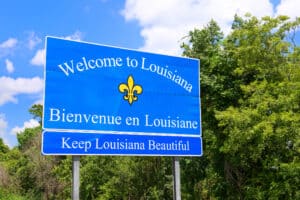
River Road Re-Visited: A journey through buried history
IQ
- 4 Min Read
In order to offer transparency into how our stories are produced and to teach our readers about the importance of media literacy online, the editorial team provides a quick self-rating of the integrity of the articles and the facts presented against the following IQ metrics.
- Published on November 15, 2022
- Last Updated February 1, 2023
River Road is revisited with highlights of Southern Louisiana residents who dedicate their lives to preserving Black culture and history.
In Donaldsonville, Louisiana, a sister and brother bury and unbury the dead together. “I’m constantly going to the cemetery, and I tell most people my sister digs up everything that I buried,” Mr. Darryl Hambrick told me. Mr. Hambrick is a funeral home director and the interim director of the River Road African American Museum, which his sister Kathe Hambrick founded in 1994. “She’s the historian, and she goes out and she wants to know why they didn’t have a coffin. Why did they bury him this way? It is said that you’re supposed to be buried from east to west. In slavery, they buried you from north to south.”
Traveling on River Road, I moved through time to an undead past. I don’t refer to the undead as hungry zombies devouring humans or evil spirits lurking in the shadows of the bayou. I mean that traveling to places like this asks us to bury and excavate the past. Unmarked gravesites and officially recognized cemeteries live alongside sprawling oak trees covered in old Spanish moss, new and old residential neighborhoods, plantations, museums, sugar cane fields and petrochemical plants and refineries. There is life here, even in decay.
Here, I confront the ancestral foundations of this state and country. From community activists fighting against industrial pollution to public historians, this is a land of preservationists who live at the intersections of the past, present and future. Even those who proclaim to tour this part of the state for so-called leisure, and not to learn about a past of terror, enter another temporal dimension. For them, that world represents a quaint, archaic, gothic south. But buried deep in that imagination are human bones and ashes waiting to be dug up.

Mr. Hambrick considers himself the “ultimate preservationist” in that he preserves people in death at his funeral home while doing the same thing with history at the museum. “I don’t know if I’ve been able to avoid death in my life at all,” he said, recalling a kid who once walked into the museum and proclaimed that everyone in the images hanging on the walls of the small house was dead. “I never even thought about it that way. And I went, ‘yeah, you probably are about right, except for me and you. So let’s learn about these people.’” For Mr. Hambrick, preservation is the “doorway to the future.”
Ms. Hambrick originally founded the museum to tell the histories of Black Americans in Louisiana. The idea began, however, with a Black History Month program at a church, Mr. Hambrick recalls. Then, it flourished into a museum connected to the Tezcuco Plantation, land now owned by the Shell Oil Company. After a fire damaged the plantation in 2002, Ms. Hambrick relocated the museum to Donaldsonville. Years after this move, the Hambricks received a call from Shell Oil about possible unmarked gravesites. In 2013, an archaeologist hired by the company to survey the land where the Tezcuco Plantation once sat found more than 1,000 unmarked graves. The Hambricks helped establish a relationship between Shell Oil, the community and the museum to preserve the resting places of long-interred enslaved people.

In recent national headlines, journalists have amplified the stories of community activists and residents who are raising awareness about the many unmarked gravesites that archeological historians are finding along the winding Mississippi River. There are thousands of enslaved people buried along the river, according to historians and community activists. Today, many of their descendants still live on the same land. Developers, however, continue to buy more land along the levee, sometimes ignoring evidence of unmarked gravesites.
An unmarked burial site is an area where one or more human artifacts remain in the ground without evidence of a tombstone or grave marker, and are not recognized or maintained by an authorized institution, according to the Office of Cultural Development.
Mr. Theron Oubre, a tour ambassador and Louisiana resident from another small river town named Vacherie, explained further: “It was custom to bury freed slaves in the fields on open land as opposed to an organized cemetery. If gravesites are west facing east, an African burying tradition, it is more than likely a slave or former slave gravesite.”
Mr. Oubre and the Hambricks are three of the many preservationists who inhabit this land. But, there are more. From residents whose families are tied to histories of forced free labor to the activists fighting for a sustainable future in southern Louisiana, people are seeking to preserve their own histories and futures. The sacred whispers from the undead speak to us.
Cristina Mislán is an associate professor of journalism studies in the Missouri School of Journalism, where she teaches courses in media representation and critical/cultural studies. Her scholarship focuses on areas of alternative media histories, mediated activism, critical/cultural studies, and transnational/globalization studies.
This story was originally published November 15, 2022 10:26 AM.





